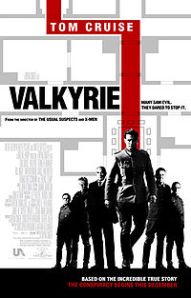The cardinal is arrested. He is told that he is a man of the church,  someone outside of the state. For suspected treason, he is interrogated and tortured for weeks, and he is ordered to confess his crimes against the state. So goes the setup of The Prisoner (1955), a movie relevant today for its portrayal of a lawless democratic regime that has no regard for habeus corpus or human dignity.
someone outside of the state. For suspected treason, he is interrogated and tortured for weeks, and he is ordered to confess his crimes against the state. So goes the setup of The Prisoner (1955), a movie relevant today for its portrayal of a lawless democratic regime that has no regard for habeus corpus or human dignity.
This movie was somewhat scandalous when it was first released. Banned at the Cannes and Venice Film Festivals, the movie might have been considered, by any viewer, an attack against post-World War II, Western governments that were occupied by Germany during WWII. In the opening scene, the cardinal, pictured on the DVD cover, is arrested just after mass. What he is arrested for is unclear. He soon faces an interrogator, a seemingly friendly man whose job it is to get the cardinal to confess something. This begins a battle of wits between the two men. But the interrogator has resources on his side; he can edit the cardinal’s tape-recorded words, and he can torture him psychologically.
What crime did the cardinal commit? We are never even told. The Prisoner is quite vague on details, and so it can apply to many historical scenarios. The characters do not have names; they are simply the cardinal and the interrogator. We do not know the country in which the cardinal is arrested, although there are hints that it takes place in France.
We do, however, know that both he and the interrogator were part of the Resistance movement against their former Nazi occupiers. After the war, each man finds himself loyal to different authorities. The cardinal’s chief crime, it seems, is to harbor some loyalty to an authority outside the state, in this case, the Catholic church. As he tells the interrogator, the modern Western state that has arrested him has acted no differently than the Nazis. The Prisoner is adamant that democracies can be totalitarian tyrannies.
Essentially a simple morality tale about the modern state run amuck, the movie is a setpiece for its two main actors, Alec Guinness and Jack Hawkins. Guinness plays the cardinal, a man subjected to thorough psychological examination, whose crimes — a suicide attempt in his past; little affection for his mother — really amount to nothing except “human weakness”. The interrogator, played by Hawkins, tries to know the cardinal better than the cardinal knows himself. His attempted friendship, however, will only be used to get the cardinal to confess uncommitted crimes against the state in court.
The highlights of the movie are its themes about democratic tyrannies — as relevant today as ever — and the interplay between Guinness and Hawkins. The script is its chief problem; many lines and scenes are predictable. We wished that Graham Greene would’ve written this script instead, but Greene would never have written anything this aesthetically simply. The movie displays many of Greene’s major themes, one of which is the Western trudge towards a totalitarianism accepted by the general populace. The key character in the The Prisoner is the interrogator, a nice man, whose unquestioned allegiance to the state ruins the application of his intelligent mind and warps his human compassion. There are a lot of these people today.








 go to Holocaust movies, and
go to Holocaust movies, and